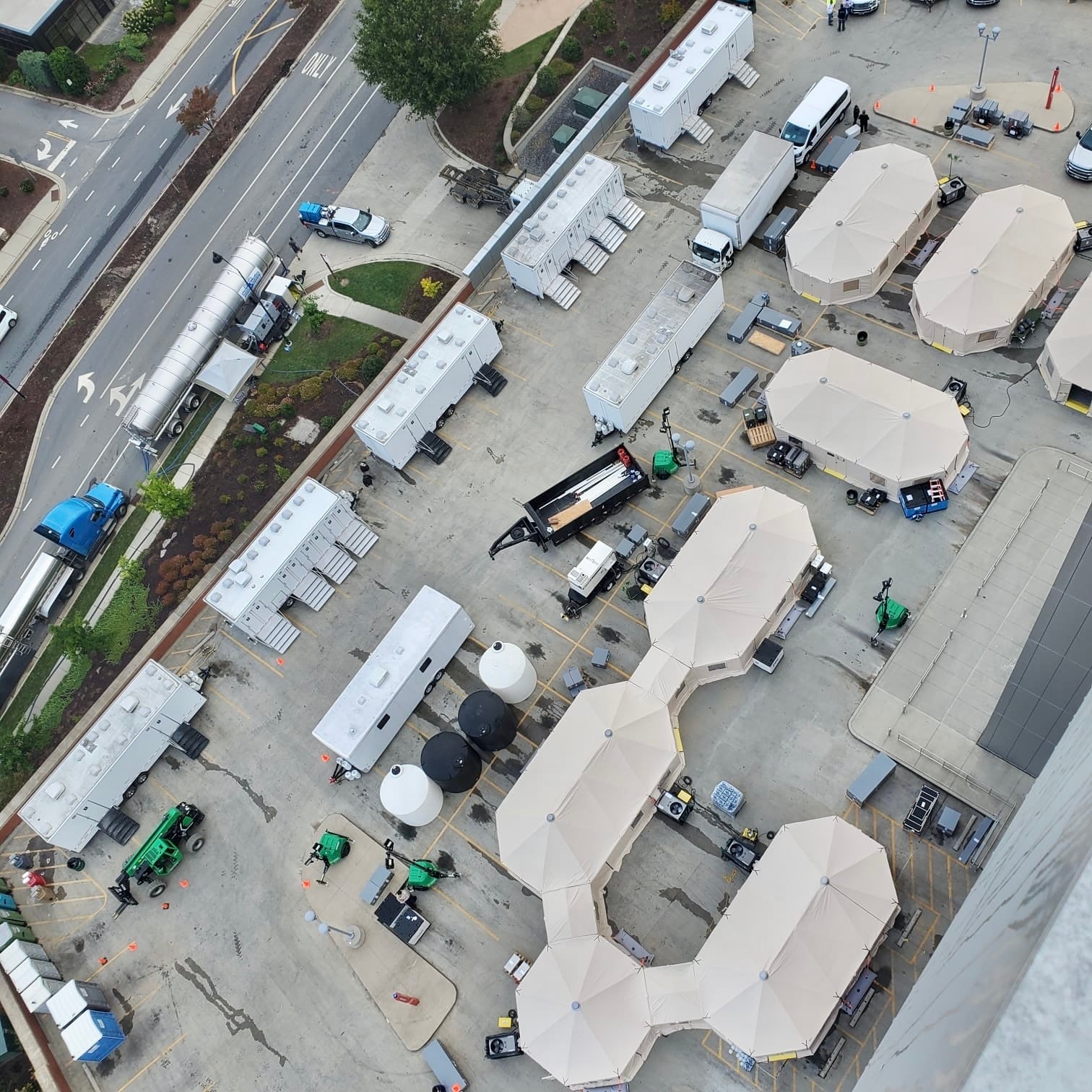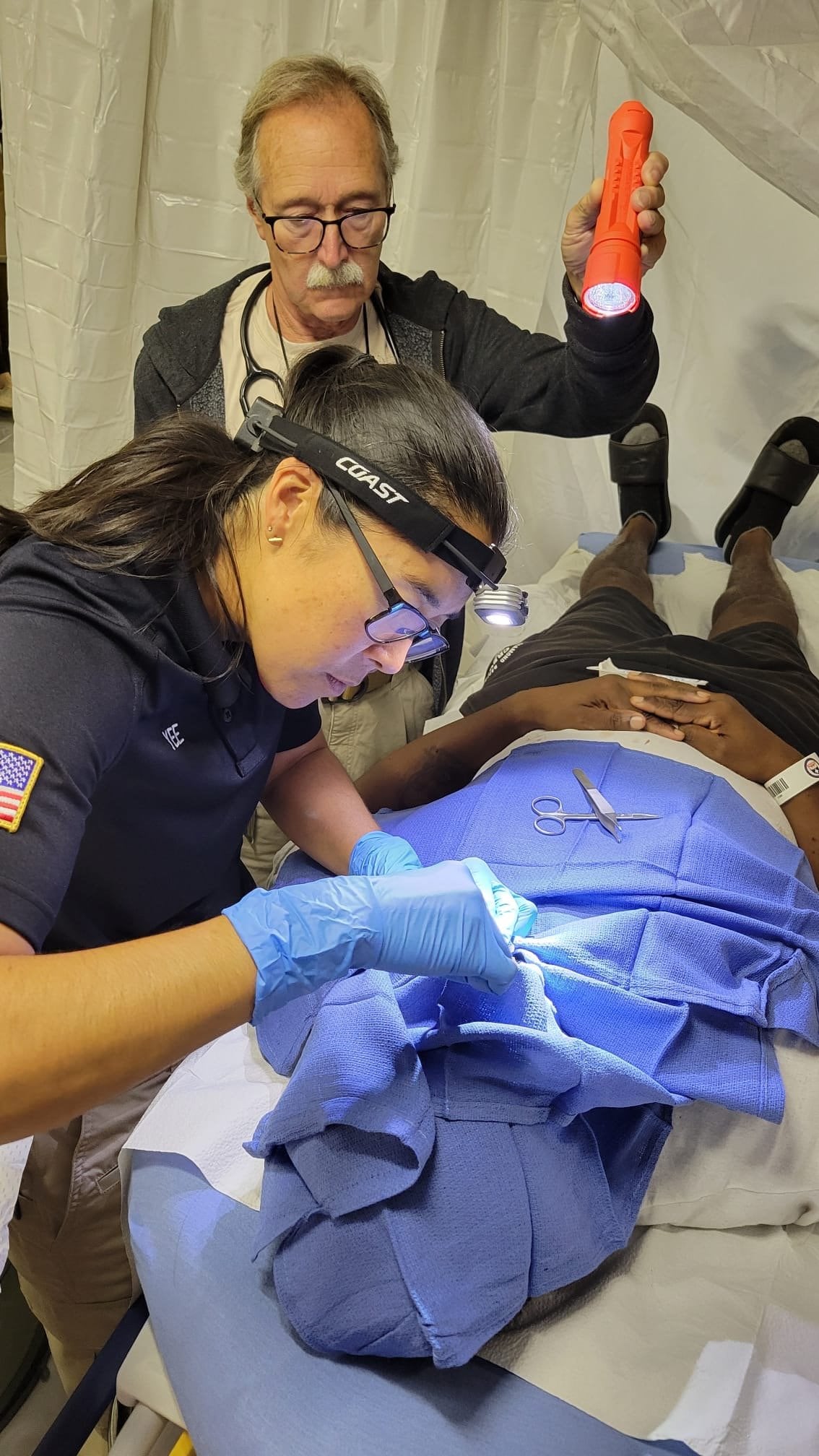South Tahoe doctor aides hurricane victims
Story by Tahoe Daily Tribune, Katelyn Welsh
 Dr. Kandra Yee (center) treats a patient's injury inside an emergency medical response tent.
Dr. Kandra Yee (center) treats a patient's injury inside an emergency medical response tent.
ASHEVILLE, N.C. – Tahoe’s own Dr. Kandra Yee assisted with disaster recovery efforts in North Carolina after the area was devastated by Hurricane Helene.
Yee, a seasoned emergency room physician and Barton Health’s vice president of hospital operations, is also on a 20 year member of the Northern California Disaster Medical Assistance Team, or DMAT. Members are a part of the larger National Disaster Medical System run by the U.S. Department of Health & Human Services’ Administration for Strategic Preparedness & Response office (ASPR). This was Yee’s first deployment with the group.
For two weeks, Dr. Yee and her team took care of a wide variety of injuries and illnesses related to the hurricane. Her patients’ ailments were similar to what she says she typically sees in her normal practice, although there were higher-than-normal numbers of patients with fractures and wounds related to the flooding and efforts to clear trees and brush.
“My patients were incredibly gracious and appreciative for the bit of help we were able to provide,” she expresses, “even in the face of all that had happened to them.”
 National Disaster Medical System emergency medical deployment in Asheville, North Carolina after Hurricane Helene.
National Disaster Medical System emergency medical deployment in Asheville, North Carolina after Hurricane Helene.
She says while the medicine was not different what what she normally practices and has been trained for, the pathway to actually take care of the patients was entirely new. The team participated in staging and training offsite in Alabama for several days, and waited on assessments and mission orders before finally traveling for several days to reach the site.
Once finally there, the team initiated patient care at first on sidewalks. They eventually transitioned into 24-hour surge support in medical tents for the influx of patients arriving to the emergency department at Mission Hospital in Asheville.
Since there were very limited pharmacies open, Yee also worked with Mission Hospital to provide prescription refills for patients’ daily medications.
Dr. Yee was one of approximately 40 personnel, and one of three physicians in her group, supporting this location. These personnel included physicians, advanced practitioners, nurses, paramedics, as well as administrative and logistics personnel.
She found the experience humbling. “Every day I felt equally grateful and fortunate for all I have and sad for how much the people in the affected communities have lost.”
These teams deploy with their own medical equipment and supplies to help prevent the depletion of local supplies during emergencies. As of Friday Oct. 15, ASPR deployed approximately 75 trucks and 405 tons of equipment and supplies for team members to use in providing patient care in North Carolina.
“The amount of help pouring in, in all variety of forms, was inspiring and yet I worry about how my patients will put their homes and lives back together weeks and months down the road when resources are still hard to come by,” Yee says.
 Dr. Kandra Yee (front) attends to a patient with a head injury.
Dr. Kandra Yee (front) attends to a patient with a head injury.
Each team deploys for up to 14 days. Should the state request additional medical support beyond 14 days, new teams will mobilize to replace existing teams.
With the help of Dr. Yee, DMAT teams throughout Western North Carolina treated approximately 1,000 patients as Friday, Oct. 11, and DMATs continue to provide treatment in impacted areas.
Yee says several past experiences have helped prepare her both mentally and practically for the logistical realities of the mission, including working as the Barton Chief of COVID Operations during the initial COVID response and as the medical director of Barton’s emergency management during the Caldor Fire initiated hospital evacuation.
“Having some background experience in smaller scale emergency responses at least prepared me to be comfortable in a situation where information was limited, tasks went beyond doctoring, resources were scarce, and the ‘road’ to getting to take care of the patients was fraught with a lot of false starts and quick pivoting-inevitabilities in disaster situations.”
Yee also found her work as a search and rescue ranger in Yosemite Valley, as well as working as the emergency department medical director for several years, helpful for the experience.
“By the end of my short time, I had put in a lot of hours and was pretty exhausted, but it felt good to be able to help and I plan to continue working with my DMAT team on future deployments.”
Learn more about the National Disaster Medical System